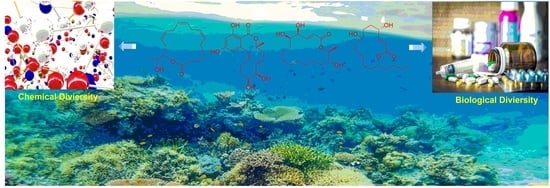Marine-Derived Macrolides 1990–2020: An Overview of Chemical and Biological Diversity
Abstract
Share and Cite
Zhang, H.; Zou, J.; Yan, X.; Chen, J.; Cao, X.; Wu, J.; Liu, Y.; Wang, T. Marine-Derived Macrolides 1990–2020: An Overview of Chemical and Biological Diversity. Mar. Drugs 2021, 19, 180. https://doi.org/10.3390/md19040180
Zhang H, Zou J, Yan X, Chen J, Cao X, Wu J, Liu Y, Wang T. Marine-Derived Macrolides 1990–2020: An Overview of Chemical and Biological Diversity. Marine Drugs. 2021; 19(4):180. https://doi.org/10.3390/md19040180
Chicago/Turabian StyleZhang, Hairong, Jiabin Zou, Xiaoxue Yan, Junlong Chen, Xiujiao Cao, Jialing Wu, Yinghui Liu, and Tingting Wang. 2021. "Marine-Derived Macrolides 1990–2020: An Overview of Chemical and Biological Diversity" Marine Drugs 19, no. 4: 180. https://doi.org/10.3390/md19040180
APA StyleZhang, H., Zou, J., Yan, X., Chen, J., Cao, X., Wu, J., Liu, Y., & Wang, T. (2021). Marine-Derived Macrolides 1990–2020: An Overview of Chemical and Biological Diversity. Marine Drugs, 19(4), 180. https://doi.org/10.3390/md19040180





